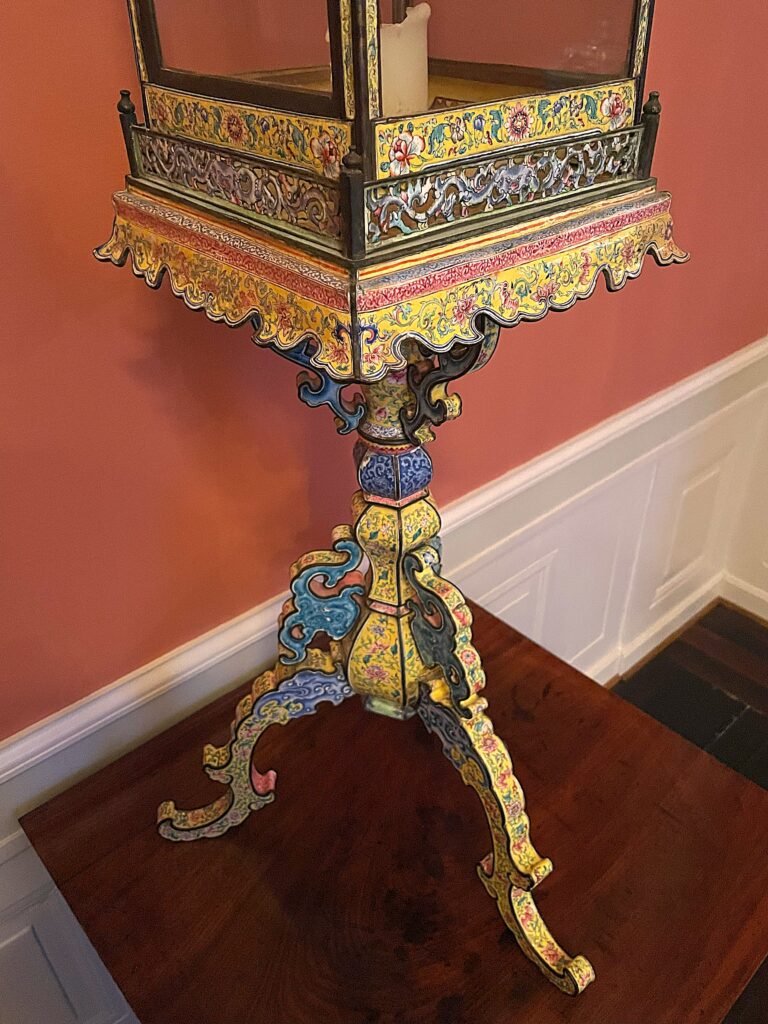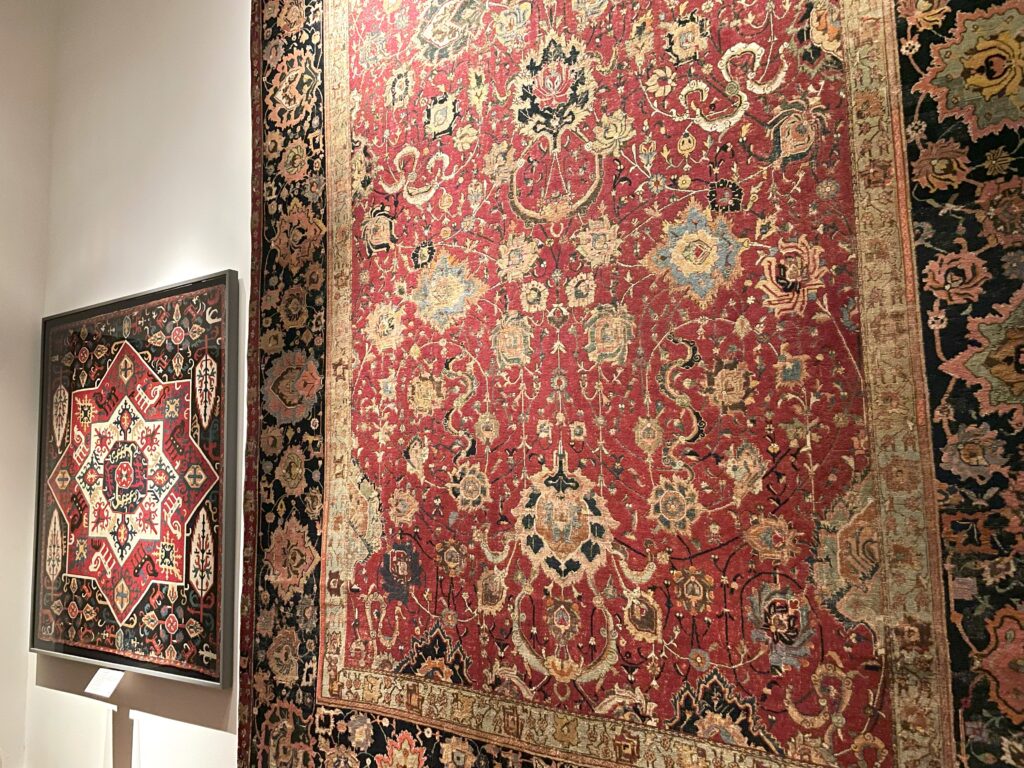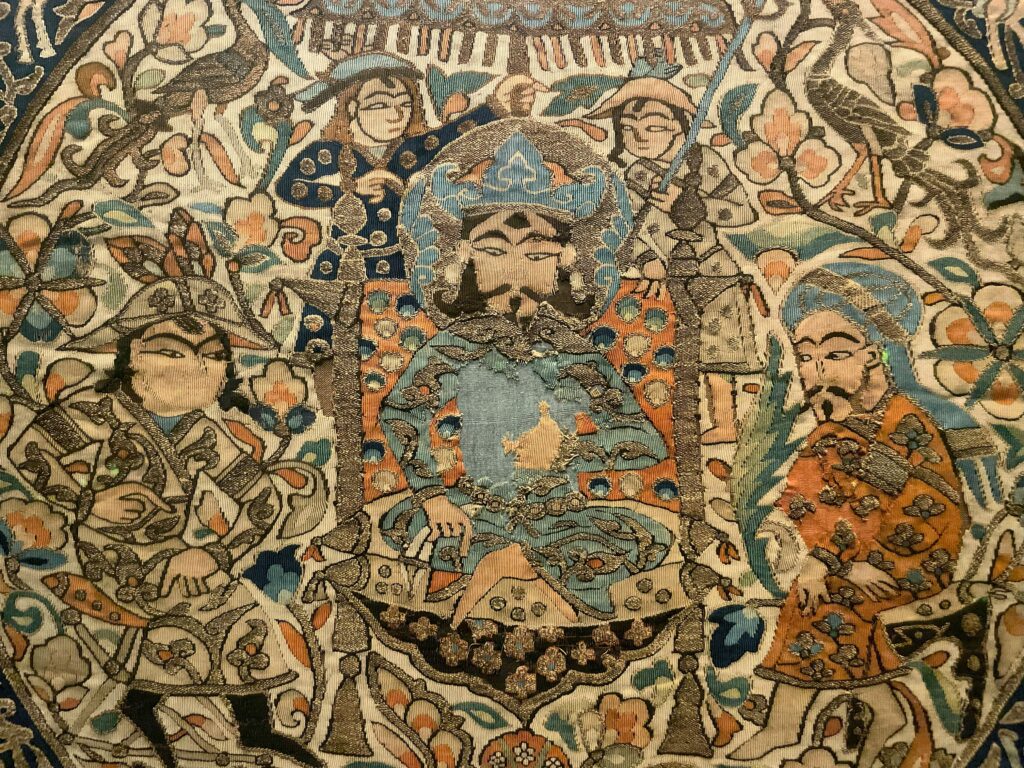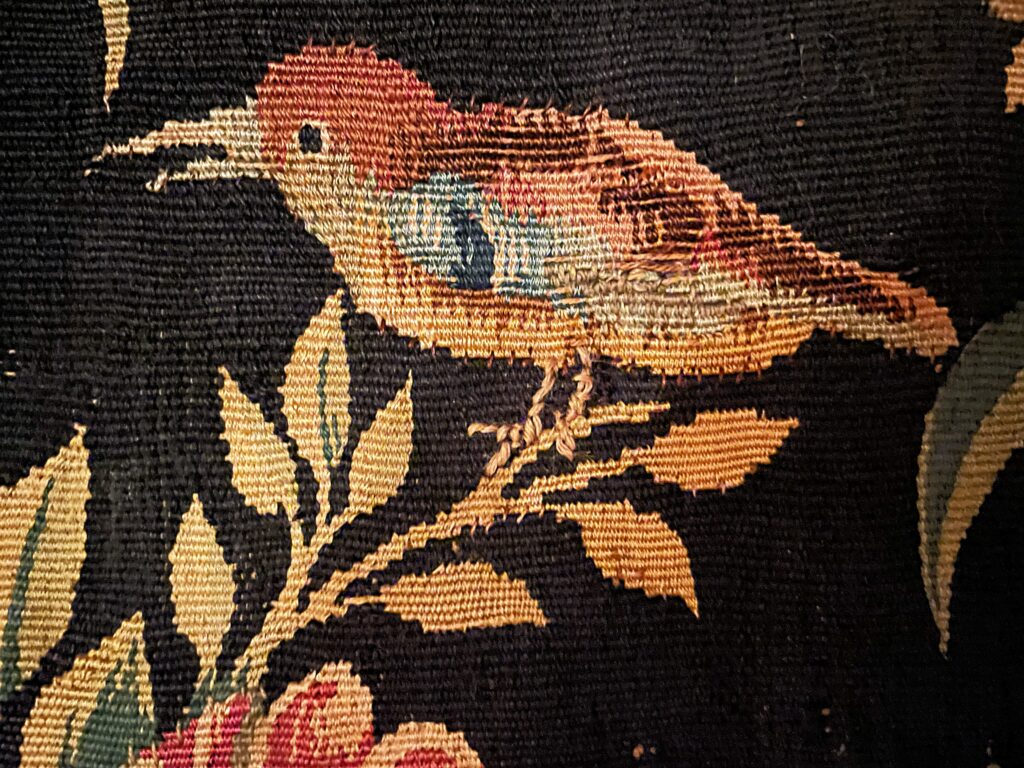Thank Shaw for his English reading recording, which you could listen to by clicking the audio above.
感谢肖为本文提供英文朗读录音,点击上方音频可听。

戴维收藏官网截图
David Collection (Danish: Davids Samling) is a small private museum hidden in the city centre of Copenhagen, featured for its copious collections of Islamic art. I heard about its name several times but had never considered a visit until Didi, a Chinese textile artist, told me that there are well-preserved Nashishi, a kind of gold-wefted brocade in the Chinese Yuan Dynasty.
戴维收藏(丹麦语:Davids Samling)是哥本哈根的一个小型私人博物馆,以其丰富的伊斯兰艺术藏品为特色。我听过几次它的名字,但直到纺织艺术家Didi跟我说那里有一些保存特别好的纳石失(一种盛行于元代的织金锦),我才考虑要去。
Several days after I heard about Nashishi collected by the David Collection, I was told about this museum again at a regular meeting of CTR. It was the last second month of my life in Denmark, I mentioned what I had not done in this country as planned, and then a colleague Pernille asked if I had visited the David Collection. She said if I wanted to see ancient textiles, David Collection should be a must-visit place.
在那之后没几天,我在一次CTR的例会上又一次听到了戴维收藏的名字。当时是我在丹麦的倒数第二个月,我在例会中提及自己还没完成的计划,然后就有位同事Pernille问我有没有去过戴维收藏。她说如果我想看古代纺织品,戴维收藏是一定要去打卡的地方。
Finally, I visited the David Collection several days before I left this country. It looks like a private house with rich collections showing the wealth and taste of its owner. On the first floor, carefully arranged furniture, cabinets, ceramics, paintings, and other items show the art of the 17th to 19th century in Europe. Among those numerous and exquisite artworks, I also saw several with the Chinese style but they do not seem to be the typical stuff used in China. I suppose they might be export goods from China.
最后,我在离开丹麦的前几天参观了戴维收藏,它看起来就像一栋藏品丰富的私人住宅,所藏之物展示着主人的财富与品味。其一楼精心布置着各种家具、橱柜、瓷器、绘画等,展示了17-19世纪的欧洲艺术。在众多精致的艺术品中,我也看到了几件具有中国风格的物品,但不像是中国的典型器物。我猜,它们是产自中国的外销品。

中国清代乾隆时期风格的一件烛台
Going upstairs, I saw an Introduction to the Islamic Collection. I think it explains very well the connotation of Islamic art. It says the term Islamic art is customarily used for objects that were made for both the religious sphere and the secular: all art made for Muslims in the part of the world where Islam is the dominant religion. The concept can moreover cover works of art that were made for Muslims in other parts of the world, and in a few cases also works of art made by Muslims for a non-Muslim clientele.
往楼上走,我看到一块关于伊斯兰艺术收藏的展板介绍,读来感觉它将伊斯兰艺术的含义解释得非常清楚:伊斯兰艺术通常适用于宗教和世俗两方面的用品,也就是所有在伊斯兰教主导地区为穆斯林们服务的艺术。伊斯兰艺术还可以包括在其它地区服务于穆斯林的艺术,少数情况下也包括穆斯林为非穆斯林客户制作的艺术品。
From this Introduction, I also learned that the David Collection is an art museum whose primary emphasis is placed on the artistic or aesthetic qualities of the objects, and the other qualities are in secondary consideration. This explained why I felt a little dizzy stepping forward.
从这个介绍中我也得知,戴维收藏是一家主要强调藏品艺术性的艺术博物馆,而藏品的其它性质则被置于次要。这也就是为什么我行走其中,会感到有些目眩。

墙上的挂毯

一件挂毯的局部细节

一件挂毯的局部细节

一件印度蚕丝绣的局部细节

Numerous objects of the Islamic culture are divided into many sections chronologically and geographically. I saw textiles now and then from one section to another. On the wall and floor, carpets could soon bring me back to the memories in Iran and Turkey. Behind the transparent glass, a shiny Indian silk embroidery quickly attracted me with its unique style that I had never seen before. In other sections, I saw tapestries and brocades as well. They depict different figures, animals, plants, or unique patterns designed by people from the Islamic world. Next to some of the fabrics exhibited, there are even very detailed hand-drawn illustrations of the fabric structures!
博物馆里,纷繁的伊斯兰藏品按年代和地理范围分置于不同区块,我随时能在不同的展厅看到纺织品出现。墙上和地上的挂毯或地毯,能瞬间勾起我对伊朗和土耳其的记忆;隔着透明玻璃,闪亮的印度刺绣能以我从未见过的画风迅速吸引我的目光。而在其它区块,我也看到了织有不同人物、动物、植物或伊斯兰特色图案的缂织挂毯和织锦,一些织物旁边甚至有非常精细的手绘结构示意图!

一块缂织物和三种缂织技法图示

一块绒织物和制绒图示
In this Islamic Collection, I did see several Nashishi fragments that I had seen from the pictures Didi showed me. However, it was too dim to observe them clearly on site. I could only recognize the typical pattern of the symmetric pearl roundels or medallions showing a Persian or Central Asian style. Moreover, most labels here are written only in Danish. Clear photos and English descriptions of some of the collected objects can be found on the museum’s website. (Website link: www.davidmus.dk)
在这个伊斯兰藏品展览中,我也看到了Didi发我的图片中几块纳石失织物的实物,但因展厅光线太暗,现场观感并不是很好,我只能识别出上面属于波斯或中亚风格的典型图案:对称联珠或圆章纹样。还有,这里的大部分铭牌都只有丹麦语,一些藏品的清晰照片和英文描述可以在博物馆网站找到。(网址:www.davidmus.dk)

纳石失


纺织品室的一块纺织品残片
Due to my ignorance of not searching for any tips in advance, I did not know there was a textile room until I walked to the end of the galleries. It looks like a small storeroom not open to visitors. But it amazed me once I found that I could draw out every layer of the drawer-like showcases to look at those fabrics. This room is truly a paradise of textiles.
由于没有提前做攻略,直到我参观至展览尽头,才发现这里还有间纺织品室。这个纺织品室貌不惊人,我乍一看还以为是不对游客开放的小储藏室,里面有许多像抽屉一样的柜子。这些柜子其实是纺织品展柜,当我发现我可以拉开每一层屉板去看每一块织物时,才惊觉此处别有洞天,实乃织物天堂。
Since the museum was about to close, I did not see each of the textiles in the Textile Room carefully. Fortunately, the website of David Collection makes it possible for me to look into their details. Apart from their accessible photos and technical information, it is also good to know specific terms for different textiles of the Islamic world, such as tiraz, samite, lampas, etc.
博物馆要闭馆了,所以我没怎么仔细看纺织品室的织物,好在大卫收藏的网站提供了大部分藏品的图片和技术信息。从网站提供的描述中,也可以了解许多伊斯兰纺织品的品名,比如tiraz(伊斯兰世界一类服务于统治者和贵族的绣字织物)、samite(一类斜纹地织金或织银锦)、lampas(一类重经重纬/多重组织提花织物)等。